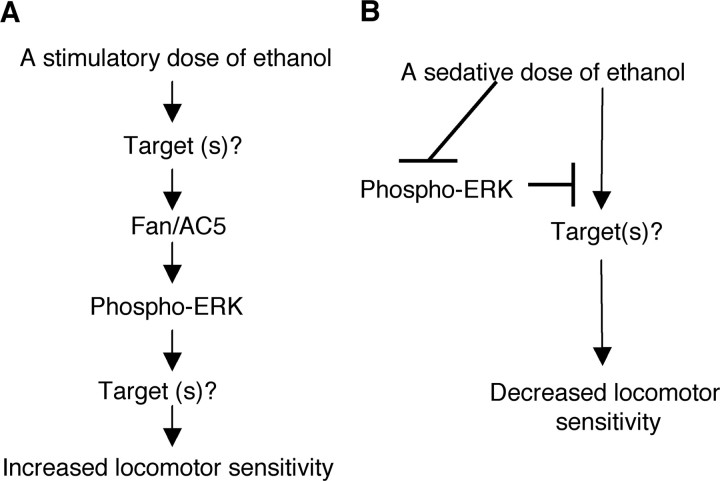Figure 8.
A proposed model to depict the role of Fan/AC5 and phosphorylation of ERK in mediating the acute dose-dependent effect of ethanol. A, A stimulatory dose of ethanol activates target(s) (e.g., dopamine and/or opioid receptors). This activation increases intracellular cAMP through Fan/AC5. Fan/AC5 in turn promotes the phosphorylation of ERK, which acts via yet-to-be identified target(s), leading to increased neuronal activity in locomotor regulatory circuits and accordingly an increase in locomotor activity. B, A sedative dose of ethanol inhibits the phosphorylation of ERK. This inhibition abolishes the ability of phospho-ERK to counteract the effect of ethanol on the target(s) (e.g., inhibition of NMDA and/or potentiation of GABA receptors). Together this leads to decreased neuronal activity in locomotor regulatory circuits and accordingly a decrease in locomotor activity.

